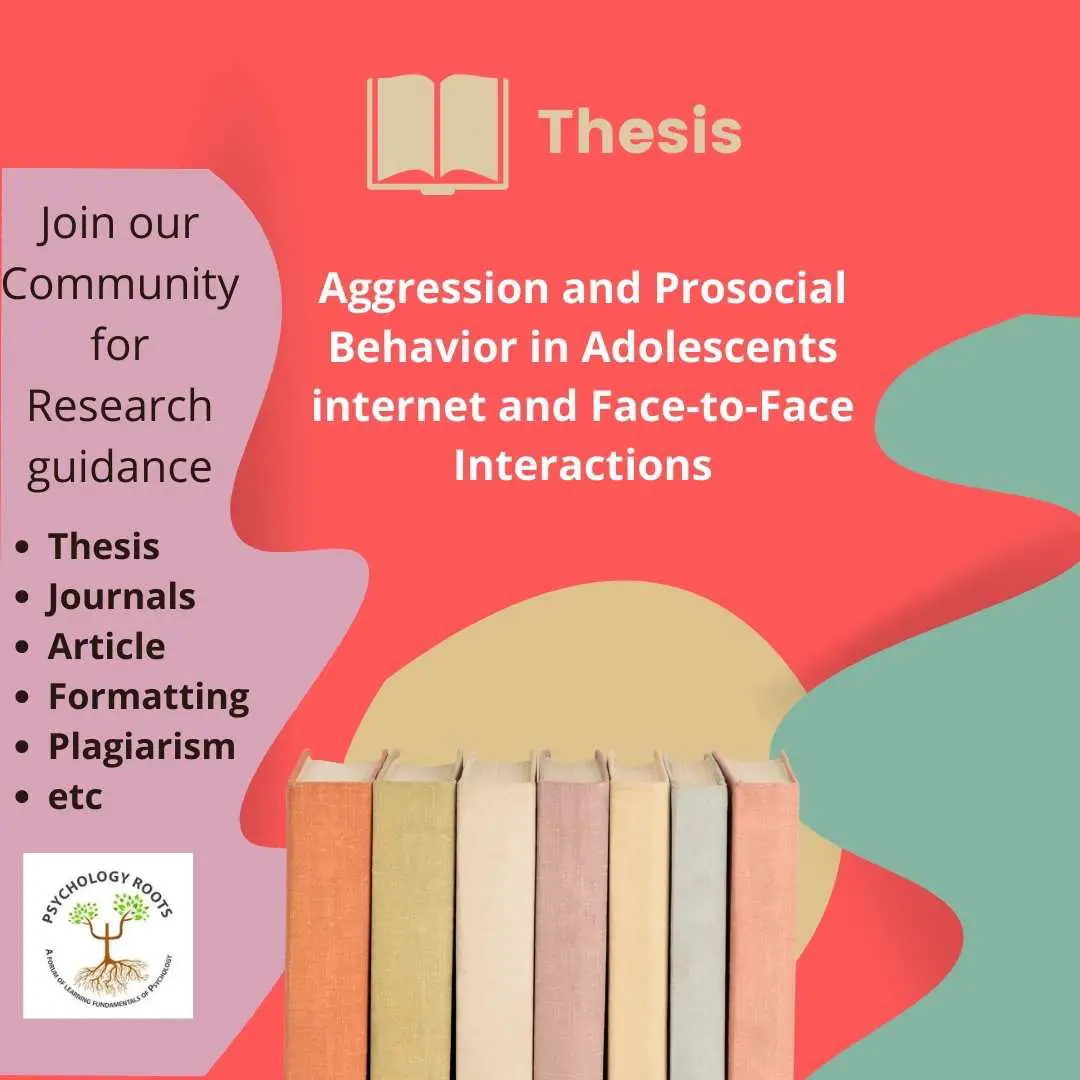Table of Contents
Aggression and Prosocial Behavior in Adolescents internet and Face-to-Face Interactions
Here in this post, we are sharing the full Psychology thesis on “Aggression and Prosocial Behavior in Adolescents internet and Face-to-Face Interactions“. You can read the abstract of the thesis with a download link. We have thousands of thesis in our collection (See articles). You can demand us any article related to psychology through our community, and we will provide you within a short time. Keep visiting Psychology Roots.
Abstract of the thesis
In the last decade, computer-mediated communication (CMC) has increased dramatically as a format for social interaction, particularly among adolescents. Despite this increase, little research has focused on the types of behaviors occurring in CMC. The purpose of this study was to address questions regarding adolescents’ CMC use (specifically ratings of use of instant messaging and blogging, and aggressive and prosocial behaviors engaged in while online), the relation between CMC behaviors and face-to-face behaviors, and the relation between ratings of use and both CMC and face-to-face behaviors. Participants were 484 7th, 9th, and 11th grade students who completed a survey about their CMC use and online and face-to-face aggressive and prosocial behaviors as agents and recipients of those behaviors. Most adolescents reported engaging in some form of CMC at least a few times a week. Females reported a higher rate of CMC use than males. Adolescents reported engaging in more online prosocial behavior than online aggression and endorsed being the agents of online behaviors more so than being the recipients. Males and females were similar in their reports of online aggression but females were higher in online prosocial behaviors.

Aggression and Prosocial Behavior in Adolescents internet and Face-to-Face Interactions
Engaging in online aggression and prosocial behaviors was related to engaging in corresponding face-to-face behaviors. Adolescents reported being agents of prosocial behavior and recipients of aggression and prosocial behavior more when face-toface than when online. Seventh-grade males reported the highest rates of being recipients of aggression, across contexts. Eleventh-graders reported being the recipients of prosocial behavior less than 7th and 9th graders. Adolescents’ CMC use was related to all online behaviors and to face-to-face prosocial behaviors. CMC use predicted adolescents’ online behaviors above and beyond their face-to-face behaviors. Limitations of this survey study included limited generalizability of results because of the age and ethnic distributions of the sample and the lack of longitudinal data, which precludes conclusions about temporal directions of effects. Finally, important implications, such as parental supervision of online behaviors, and ideas for future studies were discussed.
Researcher of the Thesis
- Kelly M. Lister
Avail Thesis [sociallocker id=64051]
[/sociallocker]
Need help in Research:
Are you struggling in research? Don’t Worry, We provide you with complete guidance and support free and quickly. Just need to create a query in our community. We also offer paid services such as:
- Thesis writing
- Article writing
- Statistical analysis
- Reference according to APA
- APA Formatting
- Supervisions
- Courses and Training
Contact us for the best quality free and paid services. info@psychologyroots.com or (+92-3336800644)
Information:
The purpose of our website is only to help students to assist them in finding the best suitable instrument for their research, especially in Pakistan where students waste a lot of time in search of the instruments. It is totally free of cost and only for creating awareness and assisting students and researchers for good research. Moreover, it is necessary for you to take the permission of scales from their representative authors before use because copyrights are reserved by the respected authors.
Help Us Improve This Article
Did you find an inaccuracy? We work hard to provide accurate and scientifically reliable information. If you have found an error of any kind, please let us know.
Add comment. we appropriate your effort.
If you have any scale or any material related to psychology kindly share it with us at psychologyroots@gmail.com. We help others on behalf of you.
Follow